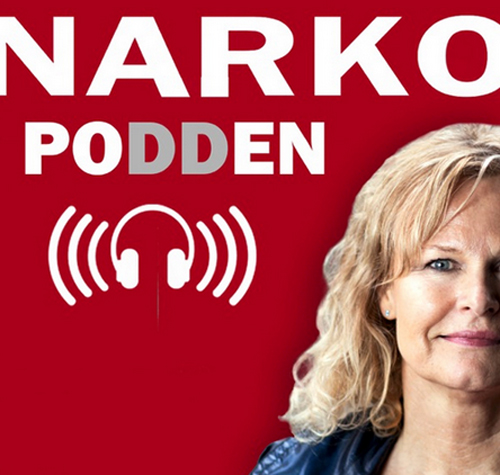The antagonists in the drug policy field, Alfred Lindesmith and Nils Bejerot, made completely different conclusions in the past. Could they have agreed today? Robert L. DuPont, MD, director of the Institute for Behavior and Health, Inc. and the first director of National Institute on Drug Abuse, NIDA, USA, presents an analysis.
The global drug epidemic of the past half century is unlike any other public health threat. The sufferers of substance use disorders pay to use the drugs that cause their addiction. Then after periods of non-use, they routinely return to use, paying for every dose of their enslaving drugs. This pattern is so typical that relapse to drug use after substance use disorder treatment is routinely defined as a core element of the disorder rather than as a failure of its treatment. In the United States, illegal drug users spend about $100 billion each year on illegal drugs.[1] The entire US drug treatment system which deals with alcohol and other substance use disorders, including opioid use disorders, costs only $34 billion each year.[2] While the cost of addiction treatment in the US is mostly paid by health insurance and public funds, individuals addicted to drugs pay virtually nothing for their treatment. In other words, addicted people could themselves pay cash for all the treatment in the nation with just one third of what they now pay for illegal drugs. This is a puzzling epidemic has inspired a remarkably wide range of theories and policy responses.[3]
The drug epidemic is truly global today with a massive and aggressive illegal drug supply that is transporting more drugs to more people at ever-lower prices and higher potencies. The fundamental challenge in confronting this epidemic is the reality that the addicted person’s brain has been hijacked by drug use. Given that about 94% of Americans with a substance use disorder do not think they have a problem,[4] it is no surprise that individuals in active addiction seldom want to stop their drug use. Typically, the desire to stop drug use happens when they have suffered negative consequences that they judge to be so severe that they conclude their lives cannot continue with using drugs. This often requires outside intervention from a family, healthcare professional, employer or the criminal justice system.
The most basic conflict of views on how to understand the drug epidemic and what to do about it is seen in the work of two giants from earlier years: Alfred Lindesmith, a professor of sociology at the University of Indiana in the US and Nils Bejerot, a psychiatrist working in the Stockholm prison and professor at the Karolinska Institute in Sweden. Lindesmith saw the key pathology of the drug epidemic as the social responses to the drug use and viewed drug use itself as mostly benign. In contrast, Bejerot saw the central problem as the drug use itself.
Further, Bejerot viewed the common social response of enabling the addicted people to continue their drug use but in safer ways – encouraged by Lindesmith – as contributing to the spread of the disease of addiction.[5]

Both professors developed complex theories based on their own experiences with addicted people. Lindesmith worked with a small sample of people addicted to opioids in the late 1930s and subsequently published his conclusions in an influential book Opiate Addictions in 1947. Lindesmith saw the fundamental problem with opioid (and other drug) addiction as a matter of false learning. Lindesmith’s work was picked up in the 1960s and 1970s when he became the symbol of rejection of what came to be called the “War on Drugs” because of its reliance on the criminal justice system and prison in response to both illegal drug use and drug supply. His alternative policy to the criminalization of opioid use at the time was also called the British approach to opioid addiction which medicalized the recreational use of heroin. Physicians prescribed heroin to their opioid addicted “patients.” The intention of these physicians was to keep these opioid users out of the hands of drug dealers and to wean them off the drug.

Bejerot had a different experience. In 1954, as a medical student at the Karolinska Institute, he was the first person to publish a case of juvenile intravenous drug use in Europe. From 1965 on he worked as a consulting physician at the Stockholm Prison and as a Research Fellow at the Swedish National Medical Research Council. Many of the offenders he saw were addicted to alcohol and other drugs, including amphetamine and morphine. In response to a sudden upsurge in intravenous drug use in the mid-1960s Sweden took the British approach by having physicians prescribe amphetamine and morphine to their addicted patients. Bejerot observed that this approach did not reduce drug use; in fact this approach perpetuated drug use. Worse, addicted patients receiving prescriptions for these drugs sold them on the street, thus spreading addiction in Stockholm to new users. This experience led to his adoption of a zero-tolerance or drug-free approach to addiction which used the criminal justice system and social rejection of illegal, recreational drug use to achieve public health goals. Under this policy, illegal drug sellers were prosecuted and the addicted individuals who were arrested were required to become drug-free.
Bejerot famously said “A voluntary drug treatment is as effective as a voluntary penal system”, exemplifying the reason the hijacked brain of the addicted person often requires leverage to refrain from drug use. It took many years for Bejerot to convince Sweden of the wisdom of the drug-free goal and of leveraging the criminal justice system to help achieve public heath goals. Bejerot never favored draconian use of the criminal justice system through long sentences. He supported the traditional Swedish restraint in the use of incarceration while insisting on the drug-free goal.
Long after the deaths of these leaders, the battle of their two visions for policies to address the drug epidemic is alive and at the forefront of drug policy debates around the definitions of the public health goals of substance use disorder – both for its prevention and for its treatment. The Lindesmith vision animates drug legalization and harm-reduction strategies that work to reduce many of the outside harms of drug use and addiction without insisting on cessation of recreational drug use. The Bejerot vision insists on a goal of no drug use in both prevention and treatment in the interests of the public health and the health of addicted individuals.
There is a way today to end the war between these entrenched ideologies by respecting them both.
Harm-reduction often summarized as “meeting addicts where they are” can be justified on the basis of its ability to be a useful entry point for addicted people into health care to the extent that the interventions lead to the drug-free state. Today that drug-free goal is not pursued in most evaluations of harm reduction efforts which instead usually are evaluated on their basis of keeping actively using addicted people alive and reducing some of the harms of drug use such as the spread of intravenous infections like HIV and Hepatitis C. To bridge this divide, it is important that addiction treatment rooted in harm reduction build into its framework the goal of long-term recovery. This can be done by integrating harm reduction interventions with recovery support and long-term monitoring for continued drug use. For example, connecting needle exchange programs with treatment programs that achieve abstinence from nonmedical drug use. In this way harm-reduction can be a step toward becoming drug-free, not an alternative lifestyle. In terms of prevention, these programs must highlight that the health standard for all youth is One Choice: no use of alcohol, nicotine, marijuana and other drugs for heath.[6]
A parallel change is needed in the drug-free side of this pitched drug policy battle. Advocates of the drug-free standard need to recognize the legitimate role of medication-assisted treatment, i.e., the use of medicines like buprenorphine, methadone and vivitrol in the treatment of substance use disorders. They also need to support making these medicines widely available – but not mandated – for addiction treatments including those committed to the goal of total abstinence from any use of alcohol or other drugs. This change is analogous to the support of drug-free programs for the use of psychiatric medicines such as lithium and antidepressants among patients in substance use disorder treatment. The use of opioids for pain and benzodiazepines for anxiety in the recovery community are more troublesome challenges to be resolved by future research but we can maintain healthy skepticism about the prospects of their use, especially chronic use of high dose opioids for pain in outpatient settings with histories of addiction and any use of benzodiazepines for anxiety among people in recovery.
As a practicing psychiatrist for the past half century, like Bejerot, I have worked with many addicted people and their families. The global policy conflicts between the harm reduction strategies of Lindesmith and the drug-free strategies of Bejerot are confronted by every family dealing with an addicted family member. Should they pay for the addicted loved one’s drugs, bail the person out from the many negative consequences of their drug use, or in contrast, should they insist on the goal of no use of alcohol or other drugs as a condition of family support? Should they insist on treatment aimed at no use of alcohol and other drugs or should they let their addicted family members decide whether to enter treatment and to stop their alcohol and other drug use? When the family members leave addiction treatment, should the family insist on monitoring including routine testing for alcohol and drugs, or trust the recovering addicts to handle that themselves? Addiction treatment programs are themselves conflicted over the goals of treatment and the needs for long-term monitoring of drug use for patients leaving treatment.
It is not as if either the Lindesmith approach or the Bejerot approach is wholly right or wholly wrong – for society and for individual families – since the cunning, baffling and powerful disease of addiction has a disturbing way of frustrating any attempt to simply understand or stop it. But as the world confronts the growing global drug epidemic, the wisdom of Nils Bejerot and the sophisticated, humane and effective Swedish national response to drugs has greater importance than ever before. The core idea from Bejerot is setting the public heath goal of rejecting commercialized recreational pharmacology, i.e., the sale, promotion and the use of chemicals that super stimulate brain reward for pleasure.[7] [8]
This idea also limits the use of prison. This approach required widespread societal rejection of drug use and strong and widespread support for the value of drug-free families and drug-free communities.
Bejerot saw clearly the risks of compromising with drug use and the value of labeling this use as unhealthy and unacceptable. Sweden provides a model for the world in drug policy today.
* * *
by

Robert L. DuPont, MD is President of the Institute for Behavior and Health, Inc., a non-profit organization that identifies and develops new ideas to reduce illegal drug use and improve treatment and prevention. He previously served as the first Director of the US National Institute on Drug Abuse. He is author of Chemical Slavery: Understanding Addiction and Stopping the Drug Epidemic published in 2018.
________________________________
• Footnotes: [1] Kilmer, B., Sohler Everingham, S., Caulkins, J. P., Midgette, G., Liccardo Paccula, R. & Lundberg, R. (2014). What America’s Users Spend on Illegal Drugs, 2000-2010. Santa Monica, CA: RAND Corporation. Retrieved from https://www.rand.org/pubs/research_reports/RR534.html
[2] National Center for Health Statistics. (2017). Health, United States, 2016: With Chartbook on Long-term Trends in Health. Hyattsville, MD: US Department of Health and Human Services, Centers for Disease Control and Prevention, NCHS. Retrieved from https://www.cdc.gov/nchs/data/hus/hus16.pdf
[3] DuPont, R. L. (2018). Chemical Slavery: Understanding Addiction and Stopping the Drug Epidemic. Rockville, MD: Institute for Behavior and Health, Inc.
[4] Substance Abuse and Mental Health Services Administration. (2018). Key substance use and mental health indicators in the United States: Results from the 2017 National Survey on Drug Use and Health (HHS Publication No. SMA 18-5068, NSDUH Series H-53). Rockville, MD: Center for Behavioral Health Statistics and Quality, Substance Abuse and Mental Health Services Administration. Retrieved from https://www.samhsa.gov/data/
[5] DuPont, R. L. (2012). Foreword. In J. Hartelius, Nils Bejerot and the Great Swedish Drug Epidemic. Stockholm, Sweden: Swedish Carnegie Institute and World Federation Against Drugs.
[6] DuPont, R. L. (2018, August 29). Reducing addiction begins with prevention. Rockville, MD: Institute for Behavior and Health, Inc. Retrieved from https://www.ibhinc.org/s/IBH_Commentary_Reducing_Addiction_Begins_with_Prevention_8-29-18.pdf
[7] DuPont, R. L. (2018). Chemical Slavery: Understanding Addiction and Stopping the Drug Epidemic. Rockville, MD: Institute for Behavior and Health, Inc.
[8] DuPont, R. L. (in press). Drug Crises on the Horizon. Backgrounder. Washington, DC: The Heritage Foundation.




